Dongkyu Won
Data Generation using Texture Co-occurrence and Spatial Self-Similarity for Debiasing
Oct 15, 2021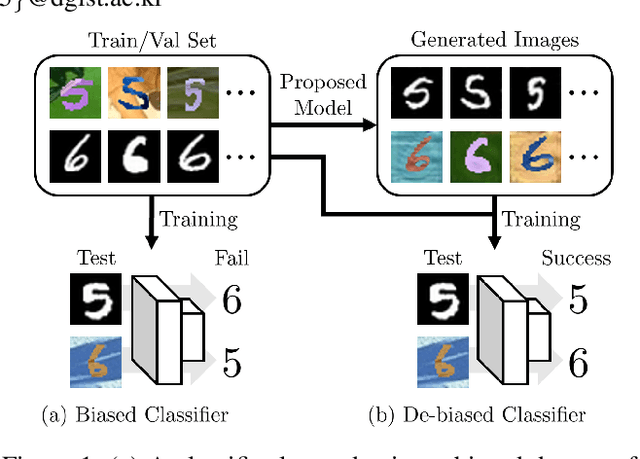

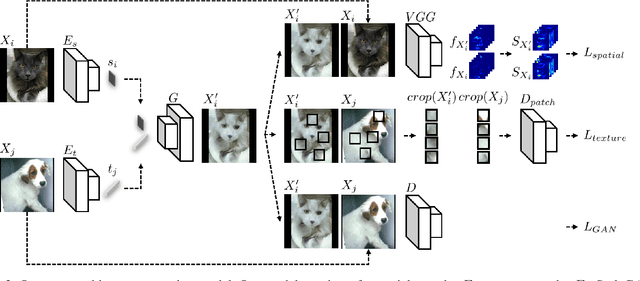
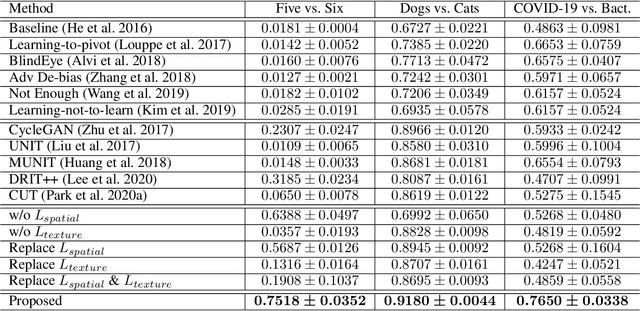
Abstract:Classification models trained on biased datasets usually perform poorly on out-of-distribution samples since biased representations are embedded into the model. Recently, adversarial learning methods have been proposed to disentangle biased representations, but it is challenging to discard only the biased features without altering other relevant information. In this paper, we propose a novel de-biasing approach that explicitly generates additional images using texture representations of oppositely labeled images to enlarge the training dataset and mitigate the effect of biases when training a classifier. Every new generated image contains similar spatial information from a source image while transferring textures from a target image of opposite label. Our model integrates a texture co-occurrence loss that determines whether a generated image's texture is similar to that of the target, and a spatial self-similarity loss that determines whether the spatial details between the generated and source images are well preserved. Both generated and original training images are further used to train a classifier that is able to avoid learning unknown bias representations. We employ three distinct artificially designed datasets with known biases to demonstrate the ability of our method to mitigate bias information, and report competitive performance over existing state-of-the-art methods.
Self-Supervised Learning based CT Denoising using Pseudo-CT Image Pairs
Apr 06, 2021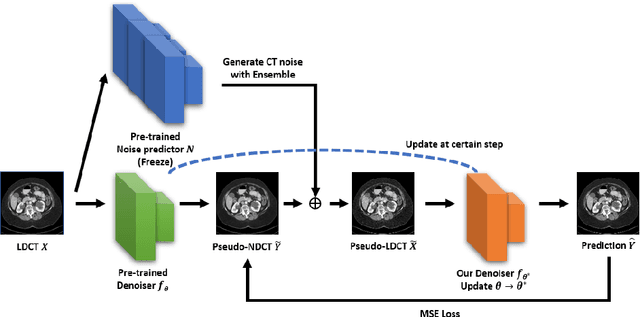
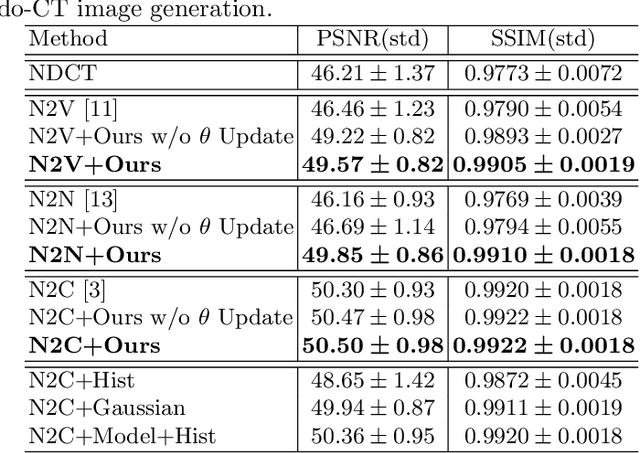
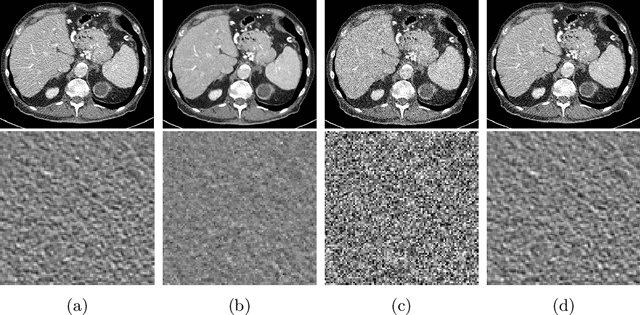
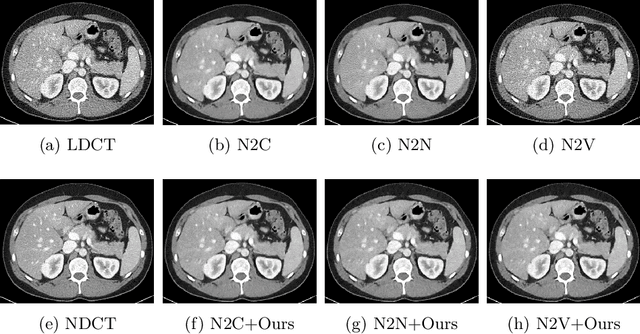
Abstract:Recently, Self-supervised learning methods able to perform image denoising without ground truth labels have been proposed. These methods create low-quality images by adding random or Gaussian noise to images and then train a model for denoising. Ideally, it would be beneficial if one can generate high-quality CT images with only a few training samples via self-supervision. However, the performance of CT denoising is generally limited due to the complexity of CT noise. To address this problem, we propose a novel self-supervised learning-based CT denoising method. In particular, we train pre-train CT denoising and noise models that can predict CT noise from Low-dose CT (LDCT) using available LDCT and Normal-dose CT (NDCT) pairs. For a given test LDCT, we generate Pseudo-LDCT and NDCT pairs using the pre-trained denoising and noise models and then update the parameters of the denoising model using these pairs to remove noise in the test LDCT. To make realistic Pseudo LDCT, we train multiple noise models from individual images and generate the noise using the ensemble of noise models. We evaluate our method on the 2016 AAPM Low-Dose CT Grand Challenge dataset. The proposed ensemble noise model can generate realistic CT noise, and thus our method significantly improves the denoising performance existing denoising models trained by supervised- and self-supervised learning.
 Add to Chrome
Add to Chrome Add to Firefox
Add to Firefox Add to Edge
Add to Edge